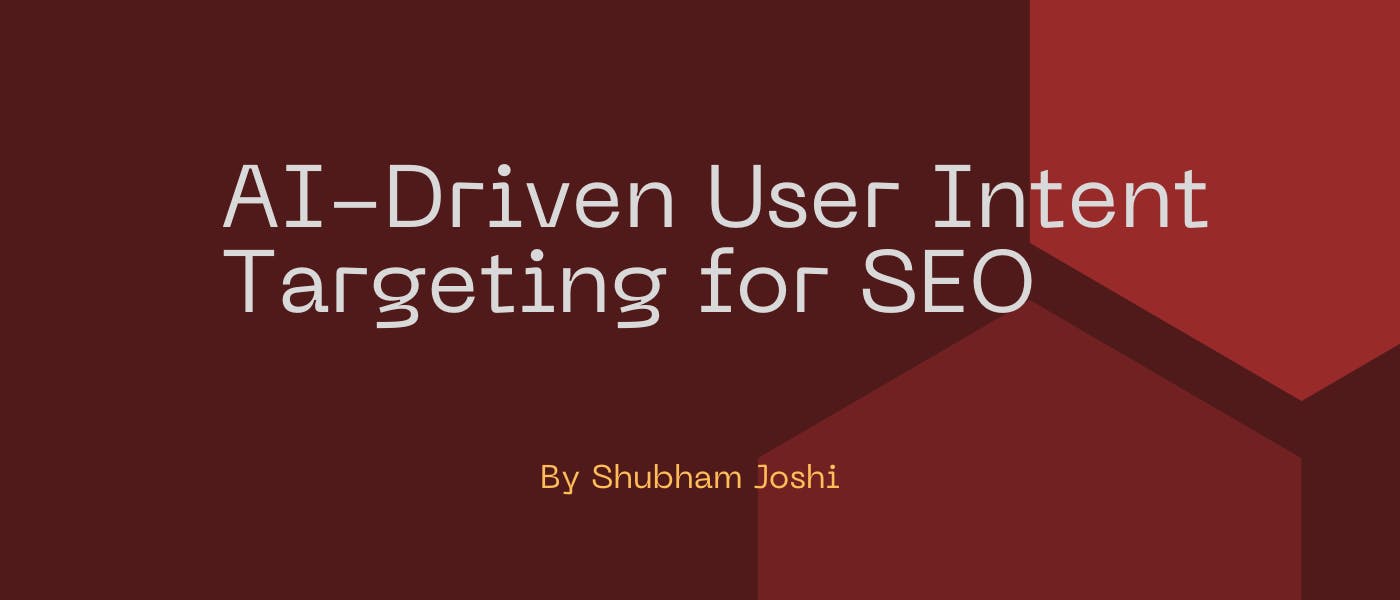Introduction to AI in User Intent Targeting
The landscape of search engine optimization (SEO) has undergone a profound transformation. The days of simply stuffing a page with a keyword are over. Today’s search engines, powered by sophisticated artificial intelligence (AI), prioritize content that truly understands and addresses the user’s underlying need. This shift has made AI user intent targeting the single most critical strategy for modern SEO professionals. It is no longer about matching words; it’s about anticipating and fulfilling the purpose behind every query.
Understanding User Intent with AIu
At its core, user intent refers to the goal a person has when typing a query into a search engine. Traditional SEO recognized four basic categories:
- Informational: The user wants to learn something (e.g., “how to bake bread”).
- Navigational: The user wants to find a specific website or page (e.g., “Google Maps”).
- Transactional: The user wants to buy something (e.g., “buy hiking boots”).
- Commercial Investigation: The user is researching a purchase (e.g., “best hiking boots 2024”).
AI has taken this a step further. Instead of relying on simple keyword signals, AI algorithms analyze the entire query context, user search history, and real-world behavior to infer intent with remarkable accuracy. This goes beyond the keyword itself to understand the why behind the search, which is the foundation of effective search intent optimization.
Core AI Technologies Enabling Intent Targeting
The shift to AI-driven SEO is made possible by several key technologies that allow machines to process and interpret human language at a massive scale.
- Natural Language Processing (NLP): NLP is the branch of AI that enables machines to read, understand, and interpret human language. In SEO, NLP tools analyze the semantic meaning and sentiment of keywords and phrases, helping to categorize them by intent.
- Machine Learning for Pattern Recognition: Machine learning models are trained on vast datasets of search queries and user behavior. They identify patterns that link certain types of language and search behavior to specific user intents, making a keyword’s intent predictable even before it’s been searched.
- Contextual and Semantic Analysis: This advanced form of analysis allows AI to understand the relationships between words. For example, it can recognize that “apple” in the context of “iPhone” and “Mac” refers to the company, not the fruit. This contextual understanding is vital for accurate intent targeting.
Key Applications of AI in User Intent Targeting
The practical applications of these technologies are what truly transform the SEO workflow.
AI-Based Keyword Intent Classification
Manually grouping thousands of keywords by intent is a time-consuming task. AI automates this process by clustering keywords based on their inferred purpose. Tools with NLP SEO capabilities can quickly analyze a large list of queries and group them into categories like “informational,” “transactional,” and “navigational,” providing a clear roadmap for content strategy.
SERP and Competitor Intent Analysis
By analyzing the search engine results page (SERP) for a given query, AI can reverse-engineer what Google believes to be the correct intent. For a query like “best protein powder,” an AI tool would analyze the top-ranking results, identify that they are all comparison articles and reviews, and correctly classify the intent as “commercial investigation.” This allows you to identify intent gaps and create content that perfectly aligns with the search engine’s expectations.
Dynamic Content Personalization
Some AI systems can tailor the content a user sees based on real-time intent signals. This is a form of SEO personalization where different versions of a landing page might be served to users depending on the specifics of their query. While still an emerging field, this offers a powerful way to enhance content relevance and conversion rates.
Predictive Search Intent Modeling
AI doesn’t just analyze the present; it can also forecast the future. By analyzing trending data and changes in search behavior, AI can predict emerging user needs and new types of queries. This allows savvy SEOs to create content that answers a user’s question before they even think to ask it, an advanced form of content planning.
Popular AI Tools & Platforms for Intent Targeting
A wide range of tools are now available to help with AI-driven intent targeting. Some, like ChatGPT, are broad generative AI tools that can be used for brainstorming content ideas aligned with specific intent. Others, like Surfer SEO and Clearscope, are specialized platforms designed to analyze SERPs and provide content recommendations based on AI-driven intent analysis. Many of these tools can be integrated into a standard SEO workflow, while some advanced users may choose to build custom solutions using public AI APIs.
Step-by-Step Workflow: AI-Powered Intent Alignment
- Gathering and Preprocessing Search Data: Begin with a comprehensive keyword list from your preferred research tool.
- Feeding Data into AI Models or Tools: Input your keyword list into an AI tool that specializes in intent classification.
- Interpreting AI Output for Intent Segmentation: Review the AI’s output, which will show you the intent for each keyword or cluster. Segment your list into clear groups.
- Creating and Optimizing Intent-Aligned Content: For each group, create content that directly addresses the user’s intent. For informational keywords, write comprehensive guides. For transactional keywords, optimize product pages.
- Monitoring, Feedback, and Continuous Refinement: Use tools like Google Search Console to monitor performance and see how users are interacting with your content. Refine your strategy based on this feedback.
Examples of AI in User Intent Targeting
- Example 1: Automating Keyword Intent Grouping: A marketer uploads a list of 1,000 keywords to an AI tool. The tool quickly sorts them, labeling queries like “what is a blockchain” as informational and “blockchain development services” as commercial, saving hours of manual work.
- Example 2: AI-Driven Personalization: A user searches for “hybrid app development.” The AI recognizes the intent is informational and shows a landing page with a detailed guide. A different user searches for “hybrid app development cost,” and the AI recognizes the commercial intent and serves a page with a pricing calculator and a contact form.
- Example 3: Rapid Identification of Intent Gaps: A content team uses an AI tool to analyze a competitor’s top-ranking pages. The AI highlights that the competitor has no content targeting “hybrid app case studies,” revealing a key intent gap that the team can exploit.
Benefits & Impact
The benefits of AI in user intent targeting are undeniable:
- Increased Accuracy and Speed: AI can analyze data much faster and more accurately than a human, leading to better targeting decisions.
- Enhanced Content Relevance and Higher Conversion Rates: When content perfectly matches user intent, it leads to higher engagement, longer session durations, and improved conversion rates.
- Improved Efficiency for Large-Scale Campaigns: AI automation for tasks like keyword intent classification allows SEO teams to scale their efforts and focus on high-impact strategic work.
Challenges & Limitations
While powerful, AI in SEO is not without its challenges. Data quality and bias can skew results, and interpreting the complex outputs of some models requires a high level of expertise. Furthermore, AI models are constantly evolving, meaning a strategy that works today may need to be refined tomorrow.
Future Trends in AI-Driven Intent Targeting
The future of AI SEO is bright. We can expect to see advancements in multi-modal intent detection, where AI understands the intent behind voice commands or image searches. The rise of generative AI in SEO will also make it easier and faster to create high-quality, intent-aligned content at scale. Ultimately, AI’s role will continue to expand from an analytical tool to a partner in content creation and strategy.
Conclusion
User intent targeting is no longer a best practice; it is the foundation of successful SEO. By embracing AI, businesses can move beyond traditional keyword research and gain a deeper, more accurate understanding of their audience’s needs. The strategic application of AI tools and methodologies enables more relevant content, higher conversion rates, and a significant competitive advantage. For any organization serious about its digital presence, leveraging AI for user intent optimization is the essential next step.
n











